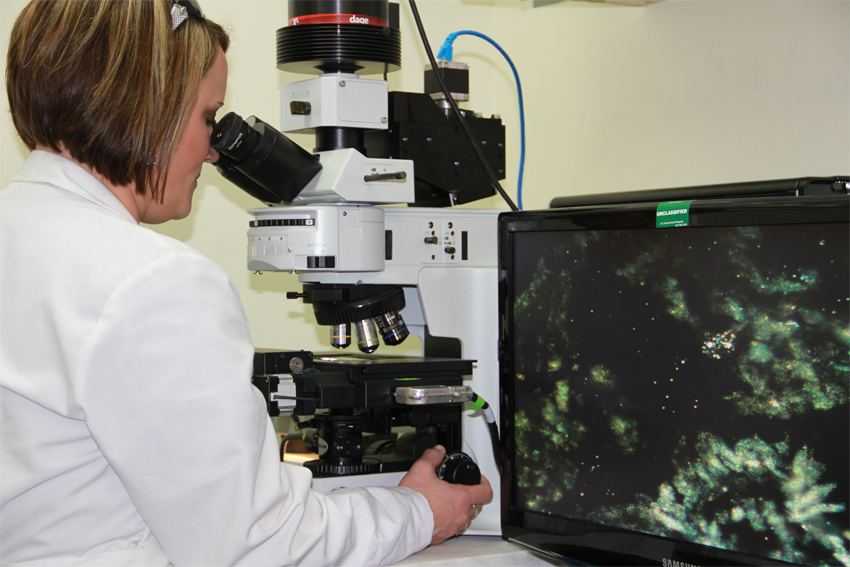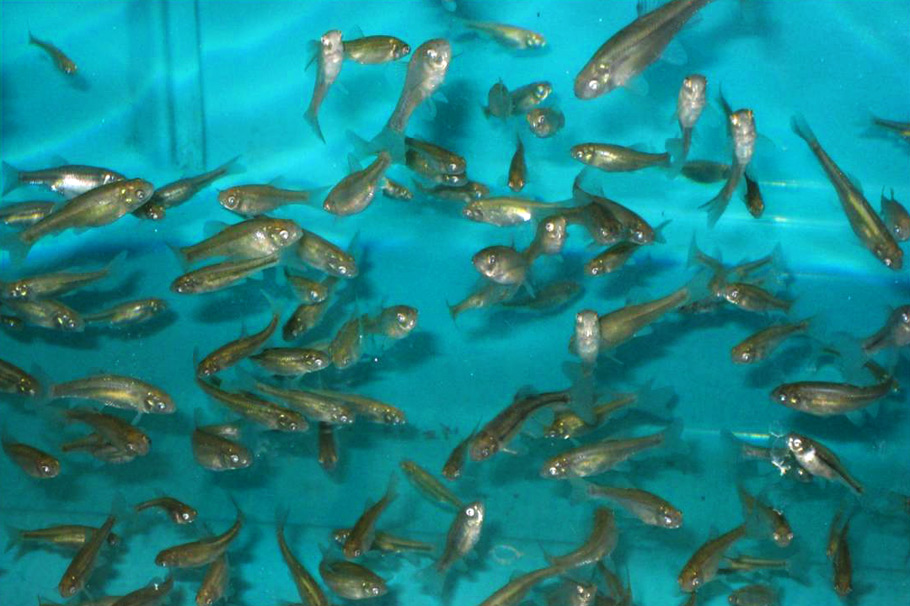Toxicity
ERDC cell screening and surrogate bioassays are used to assess the potential toxicity of nanomaterials to humans. A broad range of terrestrial and aquatic bioassay tests are used to determine ecotoxicity of nanomaterials. These methods are used to generate high quality toxicological data tailored to specific nanomaterials and nanotechnology. Toxicity assessment capabilities provide standardized and customized methods to predict effects in complex environmental systems.

ERDC uses mixed alveolar cell and macrophage cultures for in vitro screening of nanoparticle toxicity

Exposure, uptake, and ecotoxicity of nanoparticles are determined using a wide range of invertebrate and vertebrate bioassays
Capabilities
- Brunauer, Emmet and Teller Surface Area Analysis
- CytoViva Microscope Hyperspectral Imaging
- Disk centrifuge particle counting
- Diverse suite of acute and chronic toxicological bioassays for whole organisms (freshwater, marine, sediment)
- Electrophoretic mobility and point of zero charge determination
- High resolution UV-vis and NIR photospectrometry determination of concentration and aggregation
- Noldus DanioVision Behavioral analysis
Education
- Ph.D. Oceanography; University of Connecticut
- B.S. Biology; Indiana University
Research Interests
- Additive Manufacturing
- Emerging Contaminants (PFOS) Risk Mitigation
- Mesocosm Design
Mark Ballentine
Research Biologist
Education
- M.S. Ecotoxicology and Environmental Health; Duke University
- B.S. Marine Sciences; University of Florida
Research Interests
- Ecotoxicology
- Emerging Contaminants
Jonna Boyda
Research Toxicologist
Education
- Ph.D. Integrative Biosciences, 2009; Pennsylvania State University, MS Hershey College of Medicine; Hershey, PA
- B.S. Biotechnology, 2000; Rochester Institute of Technology; Rochester, NY
Research Interests
- Immunotoxicology for Wide Area Decontamination Project
- Immunotoxicology for Post-Combustion Nanomaterials
- Paddlefish Bio-inspiration Project
Keri Donohue
Immunologist
Education
- M.S. Veterinary Medical Science, 2009; Mississippi State University; Mississippi State, MS
- B.S. Biology, 2006; Mississippi State University; Mississippi State, MS
Research Interests
- Bioavailability and Degradation Pathways for 2,4 Dinitroanisole
- Nanotechnology Development: Integrating Design with Environmental Sustainability Objectives
Ashley Harmon
Research Biologist
Education
- Ph.D. Macromolecular Science and Engineering, 2023; Virginia Tech; Blacksburg, VA
- M.S. Environmental Toxicology, 2002; Virginia Tech; Blacksburg, VA
- B.S. Environmental Biology, 1999; Michigan State University; East Lansing, MI
Research Interests
- Program Planning and Execution
- Novel exposure metrics and effects assessment
- Nanocomposites release, fate and transport
- Environmental applications and implications of 3D printing micro- and nano-composites
Alan Kennedy
Ecotoxicologist